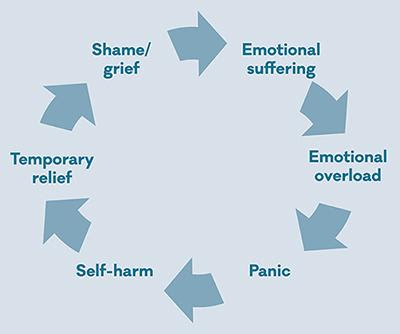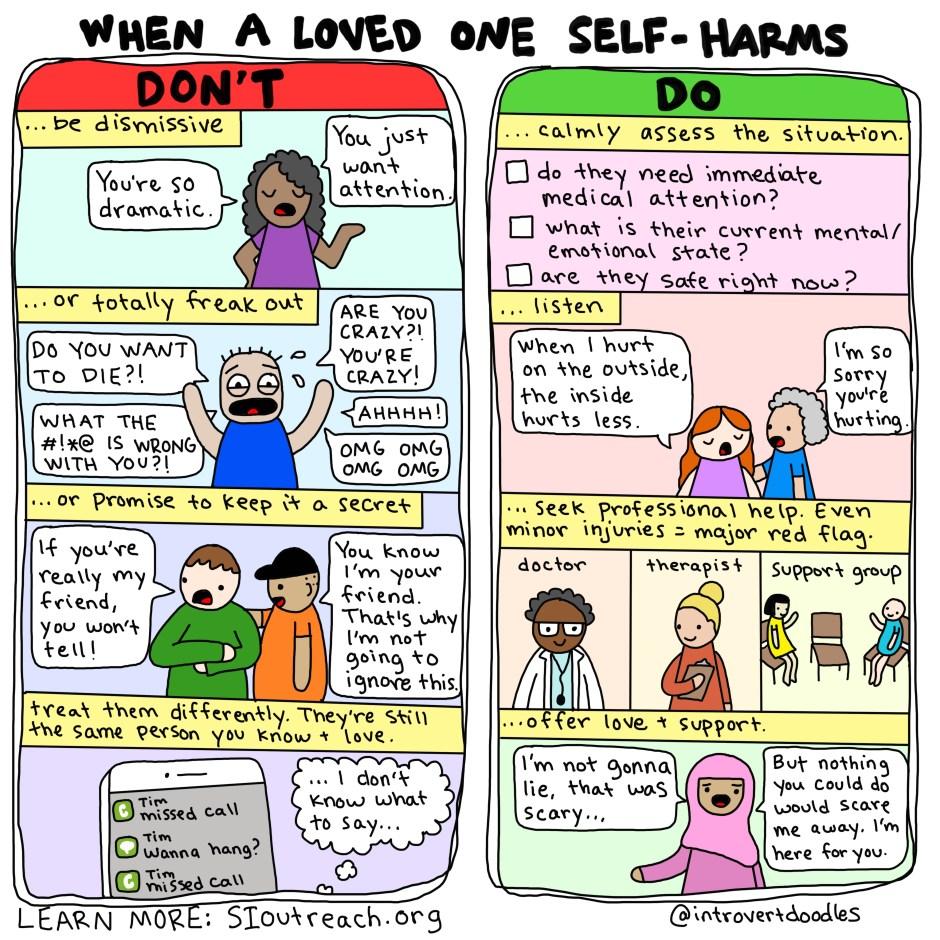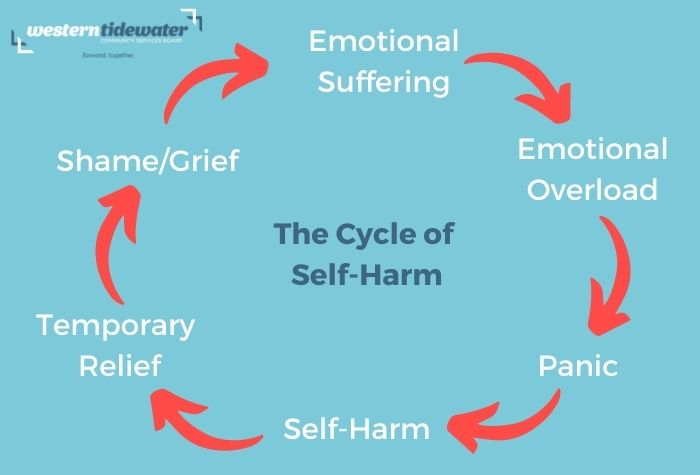This blog post was written by Jessica Schwartz
It can be terrifying when someone we know is hurting themselves.
Self-harm is usually a response to overwhelming emotion – most commonly anger or sadness – although it is also sometimes used to combat lack of emotion or feeling numb. Self-harm can distract the person from emotional pain and tension.
Those who self-harm may do so to punish themselves. Some individuals who self-harm have shared that “They’d rather feel pain on the outside, so the inside doesn’t hurt so bad”. The following can trigger self-harm when the person is trying to:
- Cope with a difficult situation
- Cope with negative feelings
- Escape unwanted or bad memories
- Gain control over one’s life and/or body
- Communicate that they need help but don’t know how to ask for it
MYTH: PEOPLE HARM TO GET ATTENTION: NOPE, IT’S USUALLY A CRY FOR HELP
The most common form of self-harm is cutting; however, hitting/punching oneself, scratching, not letting an injury heal, and pulling hair are also harmful behaviors.
Self-harming behavior can provide emotional relief, but it is temporary. The behavior may become more frequent and addicting as they hurt themselves more and more to achieve the same emotional release. This can lead to the self-harm cycle:

Now, what can we do to help someone who is emotionally hurting?
The most important thing is to make sure the person doesn’t feel judged. Have open communication and let the person know it is safe to share with you.
It can be helpful to have distractions available to reduce urges to harm. Some of these distractions vary based on age and the persons interests. Below are a few ideas:
- Write down thoughts and feelings as you experience them. Crumple and rip up the paper and throw it away. This let’s your brain know that you have “acknowledged” the thought and have let go of it
- Limit idle time. We can become absorbed in our thoughts when we aren’t actively doing something
Listen to music or watch a tv show/movie that you enjoy - Do something creative
- Call a family member or friend and just talk. Self-harm does not need to be the topic of discussion

It’s important to know that stopping the self-harm is only part of the healing process.
Therapy has been proven effective for self-harm. Therapy can be done one-on-one, and sometimes with self-harm family therapy is also helpful. Teaching the person emotion regulation, distress tolerance, and mindfulness can be beneficial as well.
The following resources may be helpful when reaching out for help:
- Crisis Text Line
Text HOME to 741741 to reach a volunteer Crisis Counselor
https://www.crisistextline.org/topics/self-harm/#recovering-from-self-harm-7 - NAMI (National Alliance of Mental Illness)
https://www.nami.org/About-Mental-Illness/Common-with-Mental-Illness/Self-harm - The Jed Foundation
https://jedfoundation.org/resource/understanding-self-injury/ - Region Five Crisis Call Center
https://region-five.org/call-center/






